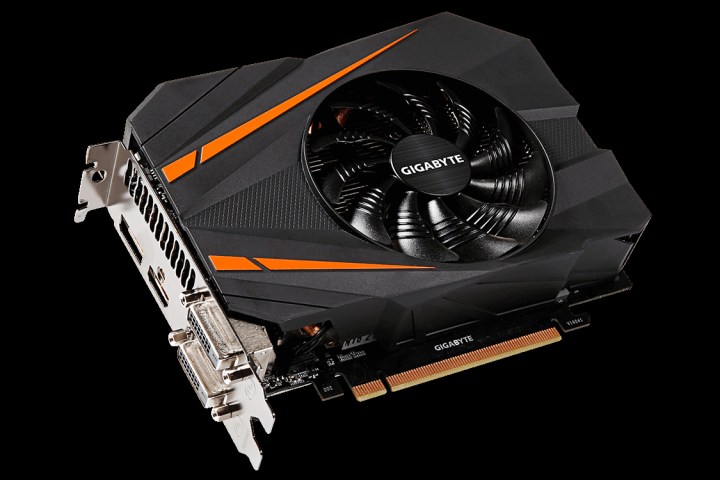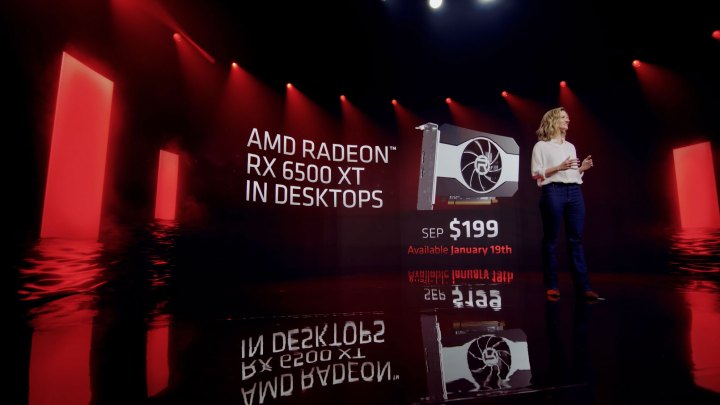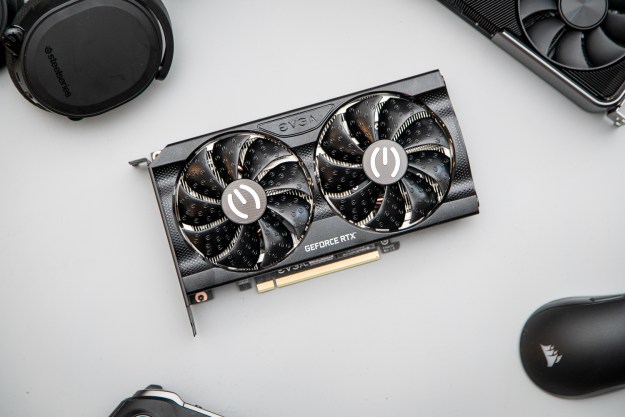AMD has launched the RX 6500 XT, a $200 graphics card that actually costs around $200 in 2022. Erm, if you can find one, at least. Early signs on the secondhand market show prices closer to $400 due to the GPU shortage, and it looks like AMD made too many concessions with this release to earn a spot among the best 1080p graphics cards.
Hardware Unboxed calls it the worst graphics card release in two decades, and Linus Tech Tips says it’s a GPU for the desperate. I’m still waiting on a sample for my own testing, but the benchmarks that are out now paint a clear picture: The RX 6500 XT doesn’t look like a good graphics card.
There are a number of reasons why, which I’ll dig into at the bottom of this article. For now, all you need to know is that the RX 6500 XT is often outclassed by graphics cards that are several years old, and even at inflated secondhand prices, those cards should offer better features and performance. Here are three overpriced
AMD RX 5500 XT 4GB

Yes, the last-gen version of the RX 6500 XT is a better option, even at its inflated prices. This card launched in 2019 for just under $200, and you can find secondhand models on eBay for around $200 to $250. That’s for the 4GB model, which is still better than the RX 6500 XT. The 8GB model is more expensive and performs better, clocking in around $300 on the secondhand market.
It looks like the RX 5500 XT performs about as well was the RX 6500 XT, trading blows up or down by a few frames depending on the game. The issue with the RX 6500 XT is bandwidth, so although it should theoretically perform better than the RX 5500 XT, it doesn’t appear to in practice.
You’re giving up hardware-accelerated ray tracing by going with the older card, but none of AMD’s current-gen cards are great with ray tracing anyway. It’s more expensive, technically, though I imagine the RX 5500 XT will sell for less once the initial stock of RX 6500 XT has made its way into the hands of scalpers.
Nvidia GTX 1070

If you want a pure performance play, the Nvidia GTX 1070 is for you. The card launched in 2016 for around $400, and in 2022, you can find secondhand options between $300 and $400. That’s not terrible given how inflated prices are right now, even for a graphics card that’s five years old.
You’re looking at anywhere from a 20% to 50% performance improvement over the RX 6500 XT depending on the game. In addition to a performance uplift, the GTX 1070 offers twice the amount of video memory for more intense workloads. It doesn’t have ray tracing or Nvidia’s Deep Learning Super Sampling (DLSS), but those aren’t too important when stacked against the RX 6500 XT.
AMD RX 580

The poster child of budget graphics cards, the RX 580 is a better deal than the RX 6500 XT, even at massively inflated prices. On eBay, you can grab an RX 580 for around $300, which is a good deal compared to the RX 6500 XT. The card launched in 2017 for around $250.
Based on early tests, some games favor one card over the other, but on average, the RX 580 and RX 6500 XT are close. If anything, it looks like the RX 580 has a slight edge.
It’s important to keep in mind how popular the RX 580 was as a mining graphics card, though. There are a ton of options on the secondhand market, but be careful to stick with reputable sellers.
Why the RX 6500 XT is a bad buy

It’s one thing that the RX 6500 XT is disappointing, but that doesn’t normally justify recommending graphics cards that are years old and only offer comparable performance. In most cases, it’s better to buy a budget graphics card from the last couple of generations than it is to buy a high-end card from several generations back.
The RX 6500 XT is an exception. The first and main issue is bandwidth. The RX 6500 XT uses PCIe 4.0 x4, meaning it takes up four PCIe 4.0 lanes. That’s fine if you’re using an Intel 12th-gen or AMD Ryzen 5000 processor, both of which support PCIe 4.0. If you’re on anything older — and let’s be honest, this card isn’t targeted at gamers with the most recent generation of processors — you’re locked to PCIe 3.0.
That’s PCIe 3.0 x4. Most graphics cards use an x16 slot, and even last-gen’s RX 5500 XT used an x8 interface. Early tests show that makes a big difference. The PCIe 3.0 x4 interface handicaps the card, sometimes by a significant margin, leading to lower performance on older platforms simply because of bandwidth limitations.
The memory works into those limitations, too. The RX 6500 XT only has 4GB of video memory, which isn’t terrible on its own. However, that memory is squeezed through a 64-bit memory bus, which is half of the size of the RX 5500 XT. The result is much lower memory bandwidth, which will cause stuttering when you first load games as the assets are streamed into memory.
Then there’s the silent killer: Encoding and decoding. The RX 6500 XT doesn’t support AV1 decode or HEVC encode. AV1 is a newer feature, and none of the GPUs above support it, so AMD gets a pass here.
The lack of HEVC encode is a big problem, though. This has been a standard feature on graphics cards for several generations now, and it’s available on all of the cards above. If you want to do any encoding with the RX 6500 XT, you’re out of luck. Streaming? Forget about it. Video editing? Only in your dreams. This is a gaming-only graphics card that barely manages gaming from the looks of it.
Editors' Recommendations
- AMD’s graphics card sales just took a nosedive
- 4 CPUs you should buy instead of the AMD Ryzen 7 5800X3D
- Nvidia DLSS is amazing, but only if you use it the right way
- AMD needs to fix this one problem with its next-gen GPUs
- Why you shouldn’t buy the best GPU of last year




